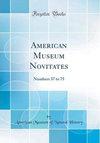中南美洲“有帽蜱蛛”四新种(蓖麻目,蓖麻科),并对leeleupi Cryptocellus的身份进行澄清,1976
IF 1.1
3区 环境科学与生态学
Q3 BIODIVERSITY CONSERVATION
引用次数: 0
摘要
Ricinulei Thorell, 1876,或“帽状蜱蛛”,是研究最少的蛛形纲之一。关于蓖麻毒素多样性的知识积累缓慢,因为这些蛛形纲动物在生物收藏中代表性不足。尽管近几十年来新物种的描述速度有所加快,但该目的物种丰富度可能仍被大大低估。在世界上生物多样性最丰富的一些国家的大片地区,该目没有任何记录,因此新记录必然是新物种。本文描述了主要来自南美洲的Cryptocellus Westwood属的4个新种:来自巴西的Cryptocellus canutama, sp. nov.和Cryptocellus jamari, sp. nov.;Cryptocellus islacolon, sp. nov.,产自巴拿马;和来自哥伦比亚的Cryptocellus macagual, sp. nov.。此外,本文还对长期以来被认为是一种常见的细菌Cryptocellus leeleupi Cooreman, 1976提供了一种新的诊断和描述。绘制了五种已知的地点记录及其推测的亲缘关系。目前的贡献使隐虫属的种数增加到45种,蓖麻属的现存种数增加到101种。本文章由计算机程序翻译,如有差异,请以英文原文为准。
Four New Species of “Hooded Tick-Spiders” (Ricinulei, Ricinoididae) from South and Central America, with Clarification of the Identity of Cryptocellus leleupi Cooreman, 1976
ABSTRACT The Ricinulei Thorell, 1876, or “hooded tick-spiders,” are among the least studied arachnid orders. Knowledge of ricinuleid diversity has been slow to accumulate because these arachnids are underrepresented in biological collections. Despite an increase in the pace of new species descriptions in recent decades, the species richness of the order probably remains vastly underestimated. Large areas in some of the world's most biodiverse countries are without a single record for the order, hence new records invariably turn out to be new species. The present contribution describes four new species of the mostly South American genus Cryptocellus Westwood, 1874: Cryptocellus canutama, sp. nov., and Cryptocellus jamari, sp. nov., from Brazil; Cryptocellus islacolon, sp. nov., from Panama; and Cryptocellus macagual, sp. nov., from Colombia. Additionally, a new diagnosis and description are provided for Cryptocellus leleupi Cooreman, 1976, long considered a nomen dubium. The known locality records of the five species and their putative relatives are mapped. The present contribution raises the number of Cryptocellus species to 45 and the number of extant species of Ricinulei to 101.
求助全文
通过发布文献求助,成功后即可免费获取论文全文。
去求助
来源期刊

American Museum Novitates
环境科学-动物学
CiteScore
3.00
自引率
6.70%
发文量
8
审稿时长
>36 weeks
期刊介绍:
The Novitates (Latin for "new acquaintances"), published continuously and numbered consecutively since 1921, are short papers that contain descriptions of new forms and reports in zoology, paleontology, and geology.
 求助内容:
求助内容: 应助结果提醒方式:
应助结果提醒方式:


